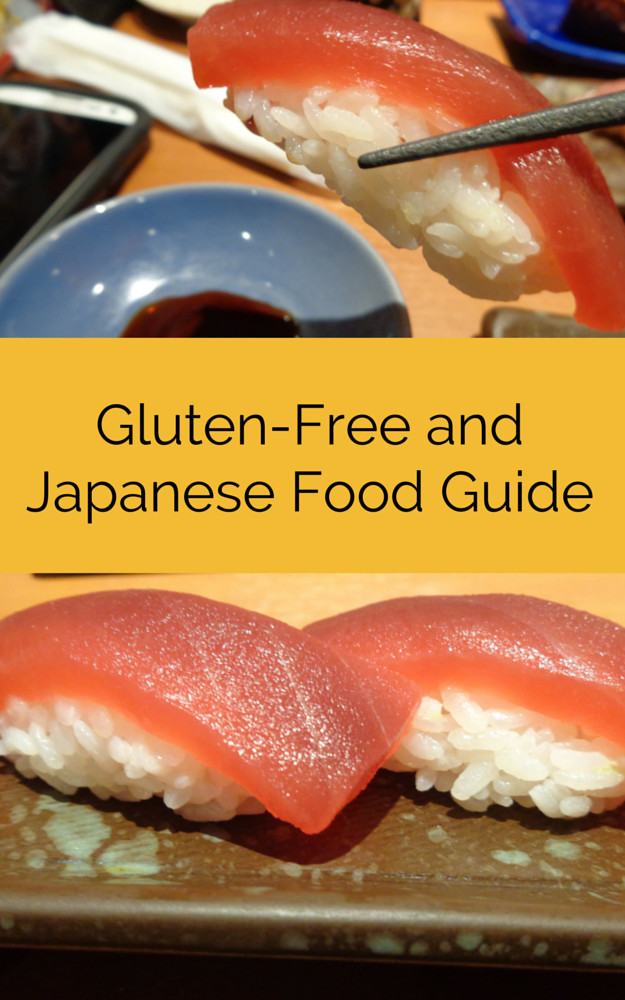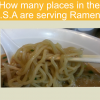Gluten Free And Japanese Food? A Look At 4 Important Japanese Ingredients

Eating out is often difficult for people with celiac disease or a gluten intolerance. Gluten is the protein found in wheat, barley rye and triticale. Triticale is a fairly new hybrid grain grown to mimic wheat.
Sushi, with its rice, fish, and vegetable-based menu, can be a viable gluten-free option if you take care to avoid the hidden sources of gluten that are often found in Japanese food. Sashimi, or different types of raw fish served without seasoned rice, is almost always gluten-free if you avoid cross contamination and the gluten in the sauces that are often served with it. As dietary issues like gluten intolerance and celiac disease become better understood, more and more sushi restaurants are offering gluten-free options.
For this article we decided to look at 4 popular ingredients that is commonly served in Japanese Restaurants.
Seaweed
The seaweed sheets that sushi is wrapped in are called nori or laver. The sheets are made from an edible red algae that is harvested, shredded and then dried in a process that resembles paper making. Oil and salt are usually added for flavor. Nori is safe to eat as long as it is not flavored with any additional ingredients like soy sauce or teriyaki sauce.

Nori that is imported from Japan is usually gluten-free, however, nori imported from Korea is often seasoned with soy sauce and would not be gluten-free.
Wasabi
Wasabi is a spicy hot, bright green condiment made from the wasabi plant which is also known as Japanese horseradish. Real wasabi is made by grating the wasabi root and is gluten-free. However, wasabi plants are difficult to cultivate and true wasabi is only found at high-end sushi restaurants in North America. Most wasabi North American consumers eat is a ready-made paste that often comes in a tube similar to toothpaste tubes.


Ready-made wasabi is usually made from ingredients like wasabi, horseradish, mustard, food coloring, and some kind of starch. Wasabi made with corn or tapioca starch is gluten-free, but occasionally they are thickened with wheat starch and are not gluten-free. If your restaurant uses a ready-made wasabi, ask if they will check the ingredients before you eat it. A dab of wasabi is often served between the fish and the rice it sits on, and unless it is gluten-free, ask for it to be left off of your sushi.
Soy Sauce
Soy sauce is one of the most frequently used ingredients in Japanese food and provides a pleasant umami or savory flavor. Unfortunately, soy sauce not only includes fermented soy beans, salt and water, but also roasted wheat. People who cannot tolerate gluten should be aware that while gluten-free soy sauces are becoming more widely available, most soy sauce does contain gluten.

A better alternative to soy sauce would be tamari, another condiment made from fermented soy beans. Although tamari is less salty than soy sauce, it is very similar in taste. Most tamari is made without wheat and is appropriate for a gluten-free diet. Like all products, however, you should read the label and confirm that it doesn't contain gluten.
Pickled (Ginger (Gari)
Pickled ginger or gari is a very common sushi condiment and is often eaten between dishes of sushi as a palate cleanser, but unfortunately, whether or not it is gluten-free will vary from brand to brand. Some brands contain malt vinegar, which is made from barley and is not gluten-free.

Other brands use food coloring or preservatives that may be made from wheat. If you can, ask to read the ingredients on the package. Higher-end sushi restaurants may make their own pickled ginger from young ginger, vinegar and sugar, and should be able to tell you what ingredients they use.
There is more!
It doesn't stop at the 4 ingredients as Japanese Cuisine is vast. You just had a sneak peak of "Chapter 1" of our "12 page Guide on Gluten-Free and Japanese Food." Right now our guide is available at the Amazon Kindle Store for $0.99(USD).
- Rice
- Seaweed
- Wasabi
- Soy Sauce
- Pickled (Ginger (Gari)
- Fish
- Fish Roe
- Unagi
- Eggs (Tamago Omelets)
- Inari Sushi
- Teriyaki Sauce
- Ponzu Sauce
- Cream Cheese & Imitation Crab (Pollock)
- Japanese Mayonnaise and other Sauces
- Spicy Mayo
- Sesame Seeds
- Tempura
- Japanese Salad
- Edamame
- Japanese Noodles
- Miso Soup
- Drinks - Tea, Sake, & Beer






